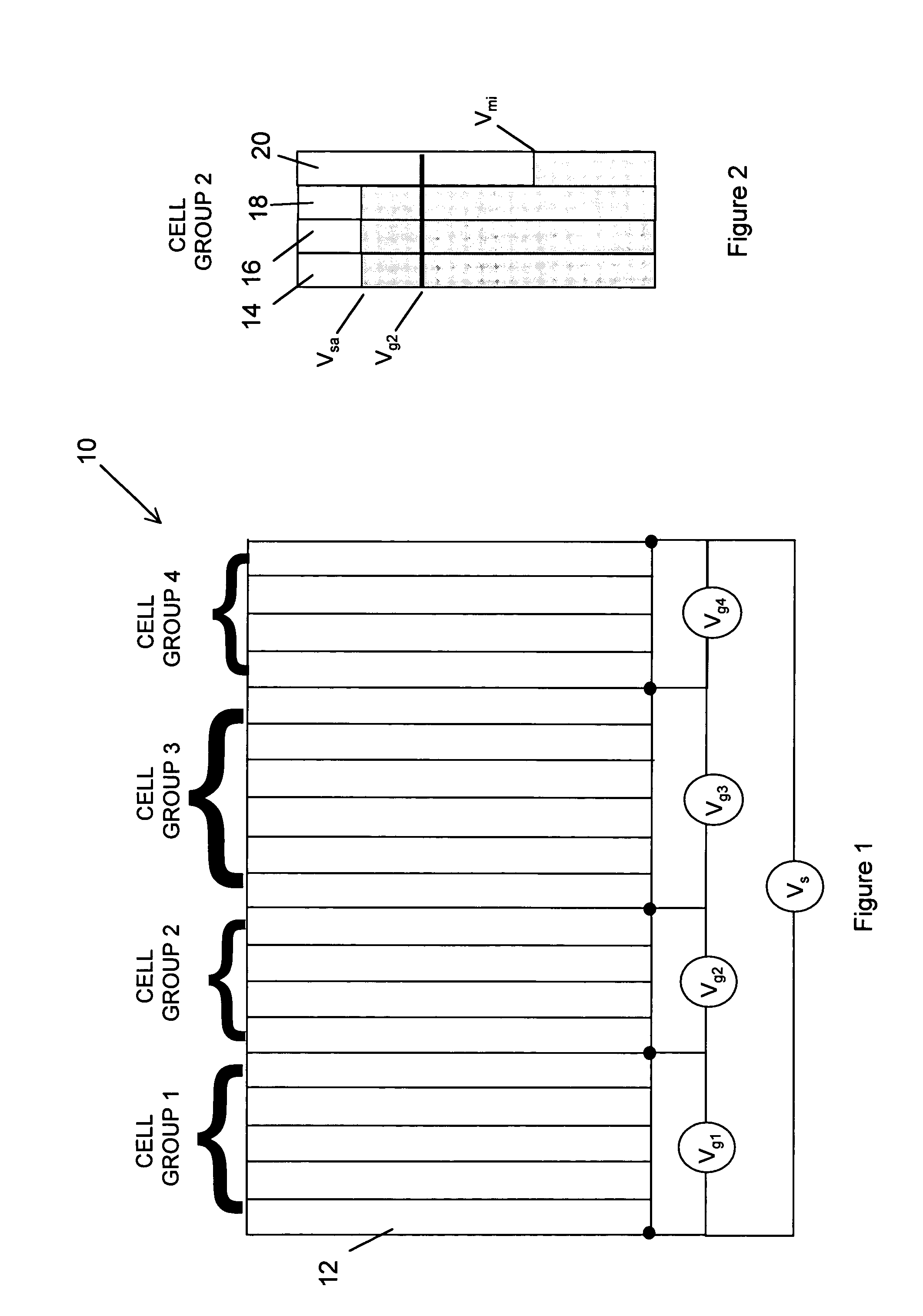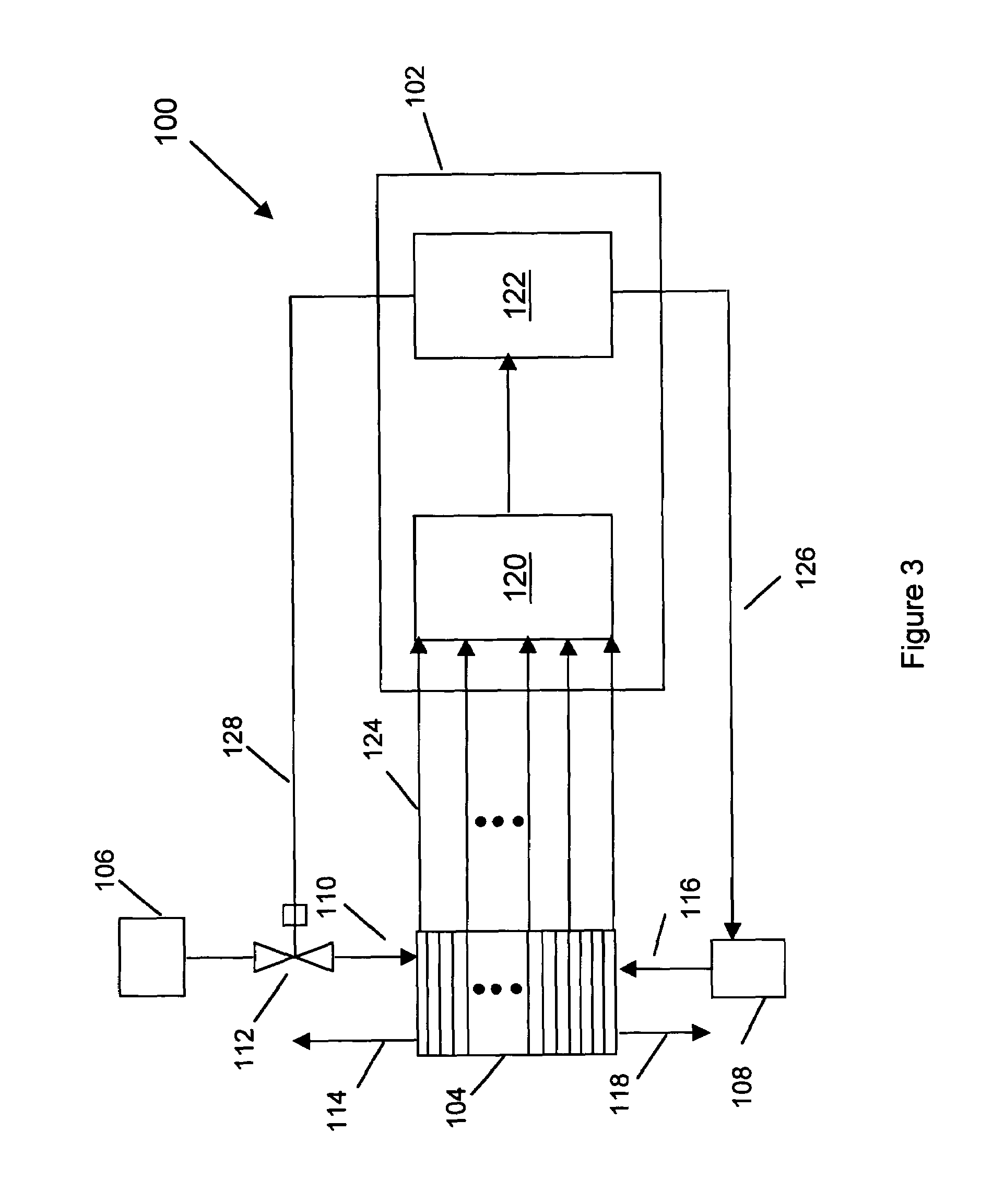Method and apparatus for monitoring fuel cell voltages
a fuel cell and voltage monitoring technology, applied in secondary cells servicing/maintenance, instruments, electrochemical generators, etc., can solve the problems of fuel cell voltage monitoring system not being able to detect poor performance, prohibitively expensive and troublesome cell voltage measurement for each cell, etc., to achieve accurate indication of cell performan
- Summary
- Abstract
- Description
- Claims
- Application Information
AI Technical Summary
Benefits of technology
Problems solved by technology
Method used
Image
Examples
Embodiment Construction
[0033]Referring first to FIG. 1, shown therein is an electrochemical cell stack 10, which may be a battery or a fuel cell stack, comprising a plurality of cells 12 stacked in series (only one of the cells is labeled for simplicity). Each cell 12 typically generates a voltage of about 0.6 to 1.0 volts. The plurality of cells 12 is divided into a plurality of cell groups. Each cell group can have the same number of cells. Alternatively, at least one of the cell groups does not have to have the same number of cells as the other cell groups. For example, as shown in FIG. 1, the electrochemical cell stack 10 comprises 20 cells divided into 4 cell groups in which cell group 1 consists of 5 cells, cell group 2 consists of 4 cells, cell group 3 consists of 6 cells and group cell 4 consists of 5 cells. In practice, the number of cell groups within the electrochemical cell stack 10 and the number of cells within each cell group can be selected according to actual system requirements.
[0034]Gro...
PUM
 Login to View More
Login to View More Abstract
Description
Claims
Application Information
 Login to View More
Login to View More - R&D
- Intellectual Property
- Life Sciences
- Materials
- Tech Scout
- Unparalleled Data Quality
- Higher Quality Content
- 60% Fewer Hallucinations
Browse by: Latest US Patents, China's latest patents, Technical Efficacy Thesaurus, Application Domain, Technology Topic, Popular Technical Reports.
© 2025 PatSnap. All rights reserved.Legal|Privacy policy|Modern Slavery Act Transparency Statement|Sitemap|About US| Contact US: help@patsnap.com



